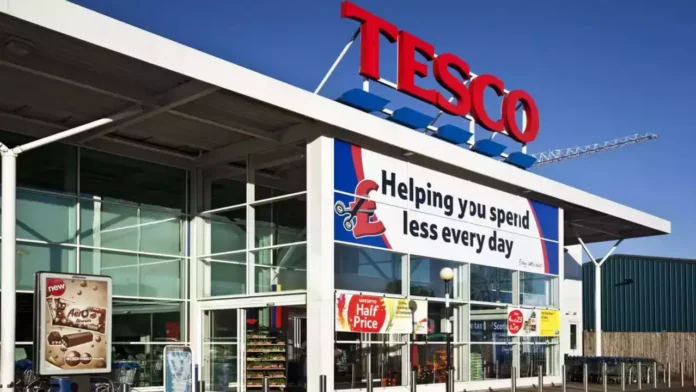Tesco, the largest retailer in Britain, revised its profit forecast for the second time in four months. This adjustment comes as the company disclosed a stronger-than-anticipated increase in underlying UK sales during the key Christmas trading period, driven by heightened demand for fresh food.
Shares in the supermarket group, holding almost 28% of Britain’s grocery market, rose by 1% early on Thursday. This extends the gains over the past year to 23%, following the company’s announcement of “great momentum” heading into 2024.
CEO Ken Murphy expressed a “cautiously optimistic” outlook regarding the well-being of the UK consumer. He pointed out that mortgage rates were beginning to decline, fuel prices were decreasing, and there was robust growth in wage rates.
“So as long as we are in a full employment market I feel like we’re in a period of relative stability,” he said.
Tesco reported sales of more than 1 million fresh whole turkeys, turkey crowns, and joints, along with over 57 million mince pies and 6.6 million bottles of Prosecco.
“(Consumers) were really determined to enjoy Christmas and they came out in force, they were really pleased to see that the rate of inflation continues to fall in food,” said Murphy.
Tesco noted that it had additionally experienced increased demand for its premium product lines and the widespread popularity of its loyalty program.
As a result, it said that it now expects retail adjusted operating profit, its key profit figure, to reach 2.75 billion pounds ($3.5 billion) in the year ending February 2024, up from 2.49 billion pounds last year.
It had earlier projected a range of 2.6-2.7 billion pounds.
Consumer Spending Trends Impact Tesco and UK Retail
Trading updates from UK retailers and industry data indicate that, during Christmas, consumers prioritized spending on food rather than on more discretionary general merchandise. This trend reflects the challenging economic conditions in Britain.
Industry data, published on Tuesday, showed sluggish UK retail sales in December, adding to concerns that the economy has tipped into a mild recession after soaring inflation forced the Bank of England to hike interest rates to a 15-year high of 5.25%.
For Tesco, during the six weeks leading to January 6, its UK like-for-like sales surged by 6.8%, surpassing analyst expectations of about 5%. In the third quarter until November 25, the sales showed a growth of 7.9%, following an 8.4% increase in the second quarter.
Similar to its smaller counterpart Sainsbury’s, which disclosed robust food sales on Wednesday, Tesco is reaping the rewards of a strategy that involves aligning prices with the discount retailer Aldi on essential items.
Its Clubcard loyalty program, offering discounted prices to members, is contributing to its success due to its widespread popularity.
The funding for these programs is derived from a strategy aimed at reducing 1.1 billion pounds in costs from the business over the two-year period ending in February 2024.
Similar to Sainsbury’s, Tesco has seen advantages from consumers opting to save money by cooking and entertaining at home instead of dining out. Sales of its upscale “Finest” range have surged by 17%.
Murphy anticipated a “minimal impact” on Tesco from disruptions to shipping in the Red Sea, noting non-food products represent just 7% of total sales.
On Thursday, Marks and Spencer, a retailer specializing in clothing and food, announced a stronger-than-anticipated 8.1% increase in sales during the Christmas trading period.
Continue Exploring: Sainsbury’s, Tesco, & other grocers bet big on festive food amid rising inflation





